|
When I think about puppy mills, I tend to think about them as an American problem. I guess it's typical for us to focus on issues we face in our own backyard and not consider those same issues in different countries or on different continents. When I heard about a book about a dog named Little Belle who was saved from a puppy mill in Portugal by a rescue group, I was intrigued. I had no idea if the dog breeding industry in Europe is as insidious as it is in the United States and I wanted to learn more about Belle and her family. I expected a book about a dog saved from a puppy mill and how she went on to lead a charmed life through love, patience, veterinary care and being given a second chance. I was pleasantly surprised by the depth of the book. Little Belle: Where Love Is, Magic Happens obviously focuses on the subject of puppy mills and how dogs are treated by people who breed dogs and do not care at all about their physical, mental and emotional well-being. What I didn't expect was for the book to touch on other issues about differently-abled dogs, decisions made regarding euthanasia of dogs or how people view what they perceive to be aggression in dogs. Much to my surprise and appreciation, the book focuses on many of the same issues I focus on in my No Kill advocacy related to animal shelter operations. As is the case with my other blogs about books, I don't want to give away the whole story. My hope is that you'll be intrigued enough from my blog to read the book and want to learn more for yourself. The short version of the story is that Little Belle was in a puppy mill in Portugal for almost 12 years of her life before she was saved by a rescue group who then got her to her new family in the Netherlands. Irene van Raadshooven decided to make it her life's mission to save differently-abled dogs and dogs with medical issues following a tipping point in her personal life. As Irene wrote, "I knew what I wanted to do - adopt old dogs and dogs who were differently-abled to give them the best years of their lives, full of love and joy. I would follow the passion deep within me.... I saw a teeny, tiny dog on the Internet, Belle. I was drawn to her in a way I had never experienced before. My heart beat harder while my eyes scanned her skinny little body, the dull brown color of her coat, the thin legs that look like fragile twigs, her cute ears with the big bald spots, and her adorable little mouth and nose. . .While normally I first thought about a possible adoption for a few days, this time I couldn't wait to email Ana at the shelter in Portugal and the next day I was on the phone with the Dutch foundation that took care of the adoptions. In one phone call and after a home visit Belle's adoption was arranged." Irene went on to write, "I believe that many events in life have a reason, or reason we cannot always understand or unravel. Often the insight comes later, as certain moments and experiences can lead us on a special and promising path. That's what I felt from the start seeing Belle's pictures, and was feeling even more strongly now that I was looking at her. Here was a kinship that would mean a key turning point in both our lives." The book is unique in that it is written not just from Irene's perspective, but from that of Belle. At first, I wasn't sure how that would come off or if it would be believable. The more I read, the more I realized that that decision was a stroke of genius. How often do we look at our own companion animals and know exactly what they're thinking because of the depth of our relationships, their energy, their body language and how they look at us? I'm sure it was no different regarding the bond between Irene and Belle. Their bond was so strong that they knew each other's thoughts even though Belle did not speak using words and Irene did not always communicate using words. In one passage in the book in which Belle is speaking she says this: "From the first moment I saw Irene I knew I could trust her; there was this instant connection between us. I didn't know that this could get stronger every day. It now seemed like this growth was infinite. I had come to realize that Irene was always there for me, no matter what happened. Right here, right now, I made her a promise that I would also be there for her. Whatever happened." As I mentioned earlier, the book is about much more than a dog saved from a puppy mill and the relationship between Belle and Irene. It touches on other issues which resonated with me as an unapologetic advocate of No Kill animal sheltering. One particular passage from Belle's perspective resonated with me. Irene said to her, "do you remember that day when we had this encounter with the woman who asked about you and how she reacted when she heard our story?" Belle thought, "oh, yes, I did. She had said that dogs that were as old as me, had health problems, and missing an eye should be put to sleep. That it wasn't worth it anymore. I wondered if old people also hadn't any value." Irene signed and said to Belle, "you know, recently I searched on the Internet for 'quality of life,' focused on animals because I had been thinking about it for some time already and what did I find? Nothing at all. . .This explains why, when I looked for quality of life for animals, I only got results for how humans could improve their lives with the animal's aid. Animals are seen as instruments rather than sentient beings with their own lives in the world. The same life belongs to us all." Irene also wrote about dogs who are perceived to be aggressive, after saving a dog named Sun who was scheduled to be destroyed. Irene wrote, "it was unbelievable that anyone had ever considered euthanizing her. Even a veterinarian had agreed to this. Quite often a physical handicap is not the only reason for relief or injection; alleged aggression - often based on deep fear - was an insurmountable problem for many people. The real problem, however, was often the person who couldn't see from the animal's perspective. . .I thought that from Sun's point of view, it was the humans who were completely unpredictable. To me being able to express yourself, both animals and humans, and certainly when you feel uncomfortable, anxious, or threatened, was a basic right." I found Little Belle enchanting, captivating, magical, uplifting, heartwarming and thought provoking. I learned not only about Irene and Belle, but about Irene's family and the other animals in her life. I was reminded repeatedly from reading the story that we must all do our very best to be present and to enjoy the time we have with each other while we can. It is precious and finite. Belle passed away on April 25, 2017, but her legacy is strong. Irene founded the Little Belle's Magical Sanctuary in her honor, "a place where we give senior dogs and dogs who are differently-abled a forever home. Every dog, whether young, old, sick and/or differently-abled, has the right to live a happy and fulfilled life and to receive all the care they need with unconditional love." I look forward to keeping up with Irene's labors of love to help dogs and help educate us humans who love them in the process. Irene was gracious enough to spend some time answering some questions for me which go beyond what we read in the book so people can learn more. Thank you very much to Irene for taking time our of her busy schedule. I hope you will read the book, follow Little Belle on Facebook and learn more about the sanctuary established in her honor. People in the United States have impressions of what puppy mills are from animal welfare organizations and from the media. How pervasive is the issue of commercial breeding of dogs or substandard breeders of dogs in the region where you live? In the Netherlands, puppy mills are more hidden than in the U.S.A., and there is also less media coverage. There are no real organizations that purely fight the puppy mill industry but there are people who try to bring the issue of puppy mills into the light. The main issue we have here is that puppies at a very young age travel from one of the Eastern Bloc countries to the Netherlands to be sold here as healthy dogs. Often they are not healthy at all because their vaccinations are not right and they were taken away from their mother's too soon. The companies that sell them act like they think about the welfare of the puppies but never show the mother dogs because they simply can't. The mother dogs are living in deplorable conditions in puppy mills in an Eastern Bloc country. People who buy those puppies don't know about this or they just don't care so this just keeps happening. The mother dogs continue to suffer and the puppies are often sick and even die at young age. It seems like finding Belle was a turning point in your life and put you on a new path. How important was she to shaping you as a person and shaping your future? Finding her was very important. She changed my life in a way I could never imagine. One of the main things she taught me was to embrace life every day, no matter how I feel. Often I looked at her, at her amazing zest for life, each and every day again, and thought "if she can live life with such joy and curiosity after all that she's been through, how could I not?" And then I felt again that spark of life in me, just like she tells about in the book, that little flame of hope, how she kept that alive. It's always there, we just somehow can't always reach it. That's how life is. Belle also brought me back in the moment, in the present, the only moment we have and truly live. Life is so precious and being able to live and experience it together is the greatest gift. You have your own health issues, as did Belle. Do you think the fact that you both deal with some limitations played a role in the bond you share? Yes, I think a big role. We understood each other. Having health issues doesn't mean life can't be lived fully. It's just different. Belle showed me that this is possible and therefore my perspective of life changed. Also, because of her way of approaching life each day, I never saw Belle as a dog with limitations. She never felt that way, too. Often it felt like we both conquered the world, in all the adventures we shared, and that we made each other more aware of our own strengths and possibilities. When Belle lost her last eye, I didn't become her eyes, because she could still see with all her other senses. The way she embraced life again was just simply amazing and taught me again a lot about myself, too. The bond we shared grew even deeper. I found it fascinating that you wrote from your own perspective but also from Belle's perspective which I think is a stroke of genius. What led you to choose this format to tell your story? When I started writing, I wanted to tell the whole story from only Belle's perspective. I just thought she could tell it so much better than I would. While writing, I realized this wasn't working because I was the only one who could really write about certain parts of my life. Also, I think it provides more insight into the perspective of Belle and our lives together when reading it from both our views. I'm very happy and touched that you found it fascinating and a stroke of genius. Belle had something called Leishmania. Many people in other regions may not know about this disease. In the US, we deal with heartworms which are caused by mosquitos and can be fatal to dogs. What causes Leishmania and is there a vaccine which can be used to prevent it? Leishmania is transmitted by a sand fly (a small type of mosquito). The sand fly lives in warm areas with humus-rich soil. Leishmania doesn't occur in the Netherlands but comes from the Mediterranean region. After infection, it can take years before a dog becomes ill. Leishmania is treatable, but not curable. When not treated in time and/or in the right way, a dog can die from the consequences of this disease. There has been a vaccine against Leishmania for several years now, although the effect of this vaccine has not yet been proven by independent research. You write not just about your personal experiences with Belle, your other dogs and your horses, but also about attitudes about the ability of animals and how decisions are made about their quality of life and end of life. What do you most want people to know about differently-abled animals and animals with perceived behavior issues so they can make better choices about those animals? In general, to not have any expectations. That's how it often goes wrong. People tend to expect a lot from dogs; they need to listen, need to be kind, can't have any fears or uncertainty. There have been so many times I've seen dogs who were just adopted who were were returned because they barked too much, were afraid too much (or just a little), did bite or did urinate or poop in the house. When a dog becomes really part of the family, without any expectations, and with knowledge, then there is a whole different energy. An energy the dog can feel so well. Then dogs feel the space to be themselves. This can take days, weeks, months or even longer. This applies exactly the same to dogs who are differently-abled. They have the same quality of life. One thing that I think is also important to share is that not a lot of vets and specialists have experience with differently-abled dogs. Look at Jessie's story in Little Belle's book as an example. I've encountered it many more times. If someone adopts a differently-abled dog, never follow the opinion of one vet, or more, when you feel that your dog is happy and does love life. Always follow your heart. I know you have plans for an actual sanctuary perhaps in Spain and that those plans are on hold for now due to your health. What is the best way for people to help you continue your mission of helping more dogs like Belle? For now, it would be beautiful if people just continue to support us with the Sanctuary we have here in the Netherlands. We already receive so much love and support from many friends and followers from around the world. Until now, we have always been able to pay for all our medical bills for the dogs and their daily care with the wonderful (monthly) donations. When one of the dogs need surgery or other medical procedures, the response and support we get is absolutely heartwarming. Also, it's very important for people to continue to support Little Belle's Dream (the fundraiser for our own place one day) so we can continue to give the senior and differently-abled dogs a forever home and family. This is the dream that started with Belle and it is her legacy.
0 Comments
I had a conversation with some of my contacts in the national No Kill community recently about the toll taken at shelters where healthy and treatable animals are destroyed. We started talking about it after an article was written by some big thinkers in the animal shelter industry called “The Human Face of Shelter Euthanasia.” Some of the content of the article troubled me and for some reason the article is not available, at least not now. The article and our conversation got me thinking about the changes I have seen in the shelter industry in the last fifteen years - at least in some places - and how the culture in shelters affects not just the animals, but the people in the building and the community as a whole. The best way to explain this is with two examples. Shelter A is a kill shelter which means that healthy and treatable animals are killed for space, convenience or what some call “lack of resources.” This means that animals who are suffering are euthanized and dogs who are too dangerous to be out in the community are destroyed, but the lives of animals who are otherwise healthy and treatable are also ended. There are a number of excuses used for this, but the end result is the same because the act is permanent. The general mindset at this shelter is that it is the fault of the public that animals “have to" die. Employees and volunteers tell themselves there is no other way because the public just does not care enough. They say that if the public would only keep pets contained, spay and neuter pets, stop breeding animals, be more responsible, etc., the shelter would not be forced to end so many lives. Some of the people in this shelter take great pride in how they treat the animals prior to ending their lives, spending extra time with them or giving them special food or treats much like a death row inmate may receive a last meal. Most shelter employees lament the death, but tell themselves there are fates worth that death like adopting to a “less than” family (which means a family which does not meet all of the shelter criteria to adopt) or like having the animals develop negative behaviors while in the shelter due to stress. I see these attitudes as a form of cognitive dissonance. The toll taken by the killing in this shelter is paid 1) by the healthy and treatable animals who should have and could have been saved; 2) by the people who work in the shelter and who have either engaged with the animals are who are tasked with ending their lives; 3) and by the community as a whole. This shelter is seen by the public not as a place of hope, but as a place of death. People do not want to go there, do not want to take their children there, and for the most part do not want to volunteer there because it is emotionally easier to just distance themselves from what happens at the shelter than to deal with the death. They just can't handle it and feel powerless to do anything about it. Shelter B is a No Kill shelter which means healthy and treatable animals are not destroyed. Animals who are suffering or are irremediably ill are euthanized for reasons of mercy. Dogs who are genuinely dangerous to the public are also euthanized because they are considered untreatable (as opposed to dogs who have mild to moderate behavior issues who can be rehabilitated, fostered and adopted into homes). In this shelter, each animal is treated as an individual and is viewed as having been - or being capable of being - someone’s beloved pet. The shelter staff works incredibly hard every day to keep pets in existing homes to avoid them entering the shelter, to provide enrichment and care to those animals in the shelter and to get animals out into foster homes, adoptive homes or to rescue groups as soon as possible. For this shelter, the public is not the enemy. The public is presumed to care and to sometimes need help and guidance either to make better personal decisions or to learn how to help the shelter. The shelter communicates on an ongoing basis with the public to help them keep pets contained, find lost pets, make sure pets can be identified, overcome problem behaviors, locate resources in the community (food, veterinary care, spay/neuter assistance and behavioral help), learn how to foster pets, learn how to volunteer to help pets, learn how to adopt pets and about pets who are at risk and need to get out of the shelter immediately because they are doing poorly in the shelter environment. The people who work in this shelter have incredibly difficult jobs, but they take pride in what they do. Each day is a new opportunity to help animals in need while serving the community. There is sorrow when the lives of shelter animals are ended, but staff and volunteers are confident that each animal euthanized was given every opportunity to leave the shelter alive, they did their very best to find a positive outcome and the ending of the life was done for reasons of mercy. I work in a community where the shelter was once like Shelter A and is now like Shelter B. The transition from a shelter which had historically destroyed thousands of healthy and treatable animals each year to one where very few animals die each year has been nothing short of remarkable. This transition did not happen because the public suddenly became more responsible or cared more or made better choices. The transition was at times incredibly difficult and it made a lot of people uncomfortable. It’s hard to admit that there is a new way of functioning while not focusing on the past and what could have been. Change happened as a result of municipal leadership, advocacy and public pressure and it has led to a complete shift in culture at the animal shelter. Are there still issues? Sure. Is there fine tuning to be done? Absolutely. But a building which was once used to house and then destroy animals is now used to house animals and keep them alive. When I think of how the shelter functioned before, I know the operation was fatal for so very many animals, detrimental to the mental, emotional and likely the physical health of the staff, and was a source of shame in an otherwise very progressive community. But all that is in the past. Now the shelter is a place of hope instead of death. People in the community turn to the shelter for help, guidance and assistance. Working and volunteering there is still a challenge because the work is really hard, but it is also rewarding which means the people who manage and help the operation are happier. I have been told that the pressure to keep up the level of life-saving is intense and I’m sure it is. The public has come to expect that animals will be kept alive now that a higher standard has been achieved. There are still critics and there always will be, but the way in which the shelter operates is now a source of community pride. What kind of shelter do you want for your community? A or B? I know the price. I know the toll. I know my choice. (Images courtesy of Erick Pleitez and Lisa Vallez)
|
AuthorI am an animal welfare advocate. My goal is to help people understand some basic issues related to companion animals in America. Awareness leads to education leads to action leads to change. Archives
July 2024
Categories
All
image courtesy of Terrah Johnson
|
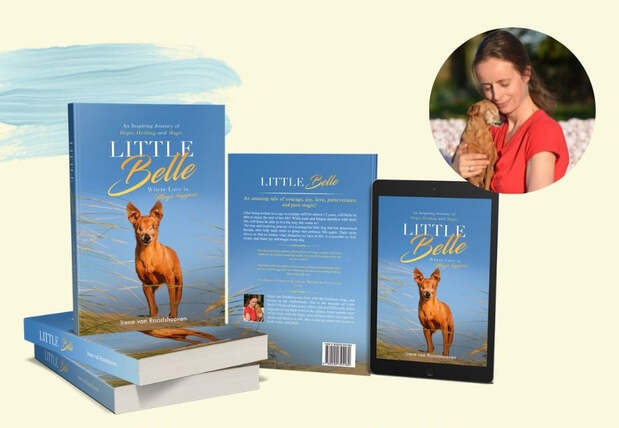
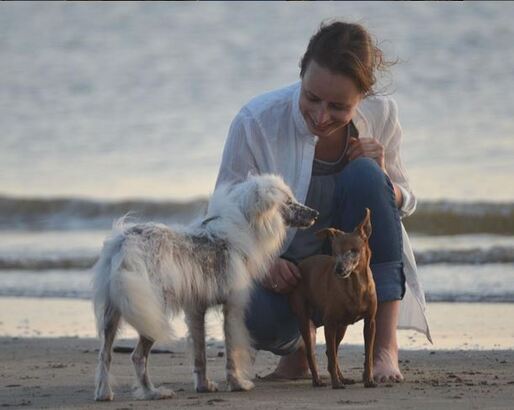
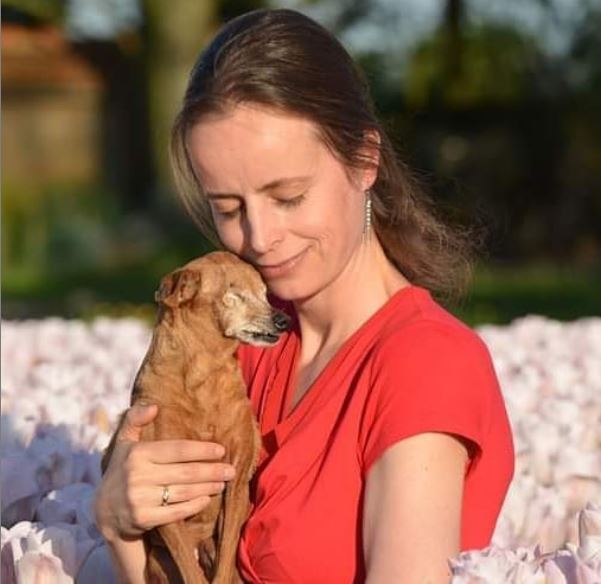

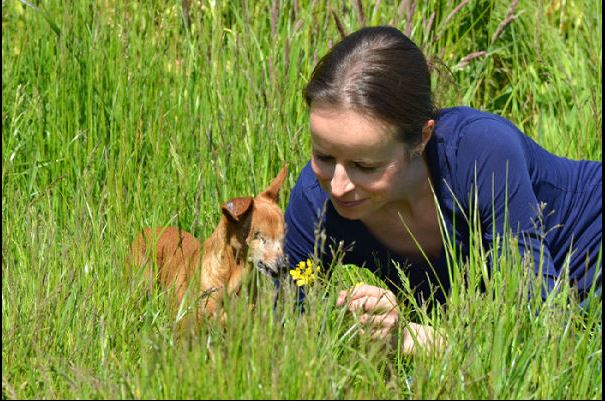
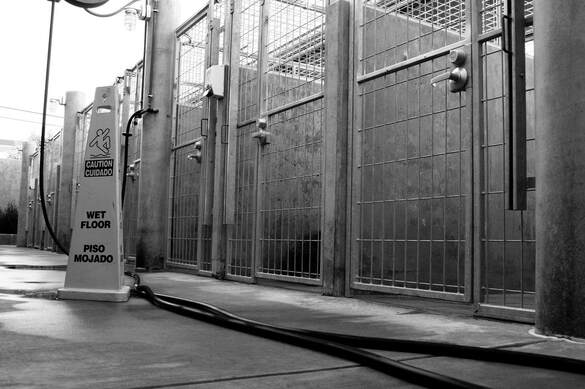
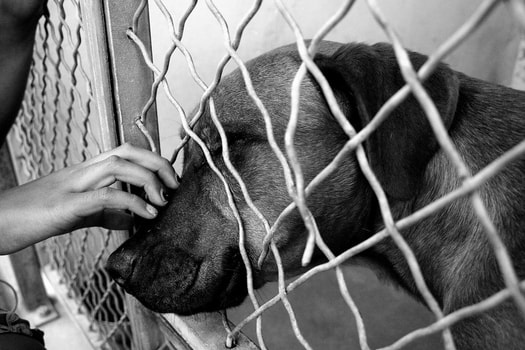

 RSS Feed
RSS Feed